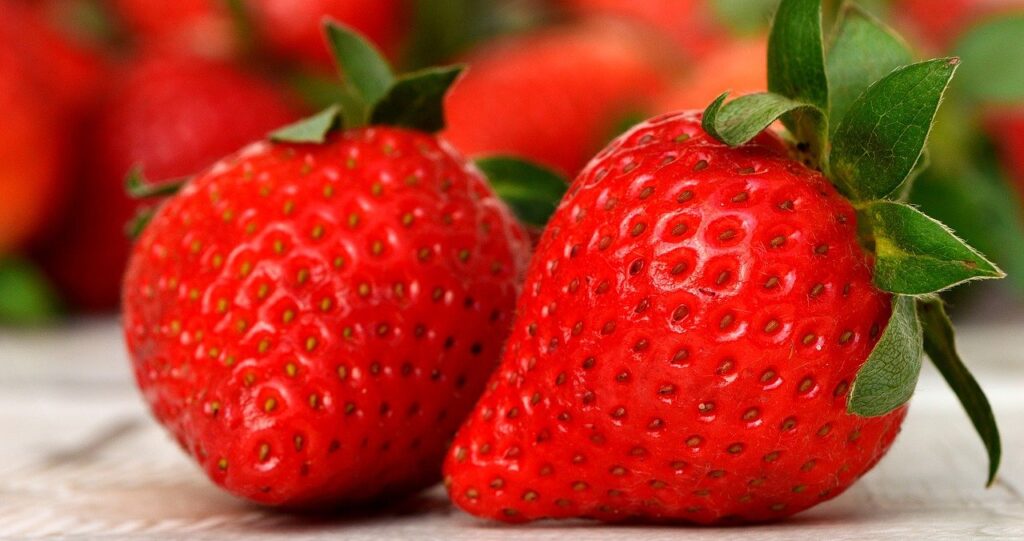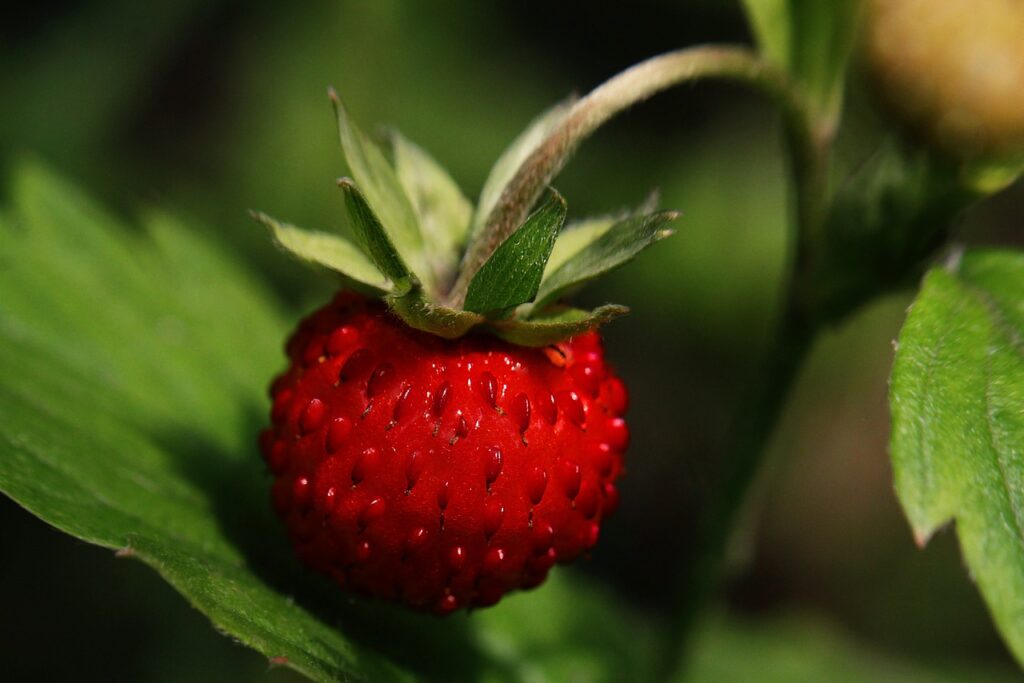Homegrown strawberries are far more flavorful than what you’ll ever find in a grocery store. Why? The sugar in berries converts to starch soon after it’s picked. Plus, strawberries are probably the easiest of the fruits to grow!
Strawberries are a fun crop to grow with children. Plant strawberry runners or young plants in spring or autumn, and you’ll be rewarded with masses of delicious strawberries from late spring.

STRAWBERRY PLANTS COME IN THREE TYPES:
- June-bearing varieties bear all at once usually over a period of three weeks. Day-length sensitive, these varieties produce buds in the autumn, flowers, and fruits the following June, and runners during the long days of summer. Although called “June-bearing” or “June-bearers,” these strawberries bear earlier than June in warmer climates.
- Everbearing varieties produce a big crop in spring, produce lightly in the summer, and then bear another crop in late summer/fall. These varieties form buds during the long days of summer and the short days of autumn. The summer-formed buds flower and fruit in autumn, and the autumn-formed buds fruit the following spring.
- Day-Neutral varieties produce fruit continuously through the season until the first frost: Insensitive to day length, these varieties produce buds, fruits, and runners continuously if temperature remains between 35° and 85°F (1° to 30°C). Production is less than that of June-bearers.
HOW TO GROW STRAWBERRIES AT HOME?

WHERE TO GROW STRAWBERRIES?
Make sure you find somewhere in your house that gets at least 6 hours of direct sunlight a day. If you don’t have many sunny spots, you may consider a grow light, as edible plants, especially strawberries, need lots of sun in order to thrive. Also, consider the space. A couple of ideas to save space are to use strawberry pots or even grow strawberries from containers that hang from the ceiling. Otherwise, dedicate a whole area of your home or apartment, or a long windowsill specifically for your strawberry plants. Just be sure not to overcrowd the plants, as they can become susceptible to disease and mold.
WHEN TO PLANT STRAWBERRIES?
Early spring is a great time to plant your strawberries. A general rule to note for strawberries’ growing season, is that they typically die back in winter and start growing vigorously as the soil warms in spring. Before planting, remove runners, or daughter plants, trim any dead or old leaves, and trim the roots about 4-5 inches (you definitely don’t want them longer than 8 inches).
CAN YOU GROW STRAWBERRIES IN A POT?
Yes – strawberries can be grown in a pot, or in the garden outside. A few pointers/tips however:
- If you are starting from seedlings, then soak the roots before you plant, then plant the strawberries so that the crown is even with the surface of the soil, and the root system fans out.
- Be careful of planting the roots too deep – this will cause the plant to suffocate.
- Strawberries have a shallow root system, and are not picky about what they are planted in, as long as they are given the correct soil, light, and water.
- The soil should be slightly acidic – a pH of about 5.5 – 6.5.
HOW TO PLANT STRAWBERRIES
- Provide adequate space for sprawling. Set plants out 20 inches apart to leave room for runners and leave 4 feet between rows. Strawberries are sprawling plants. Seedlings will send out runners, or ‘daughter’ plants, which in turn will send out their own runners.
- Roots shouldn’t be longer than 8 inches when plants are set out. Trim them if necessary.
- Make planting holes deep and wide enough to accommodate the entire root system without bending it. However, don’t plant too deep! The roots should be covered, but the crown should be right at the soil surface. It is very important that you do NOT bury the crown (central growing bud) of the plant or it could rot! The leaves, flowers, and fruit must be exposed to light and fresh air.
- Water plants well at the time of planting.
- It is also possible to grow strawberries from last year’s runners.
HARVEST AND STORAGE
Pick strawberries in the morning, when the fruits are cool, and immediately put them in the refrigerator. Wait until just before you eat or cook them to rinse the berries thoroughly with cool water. Extra strawberries can be frozen, dried, or made into jam or preserves.
Leave a reply













